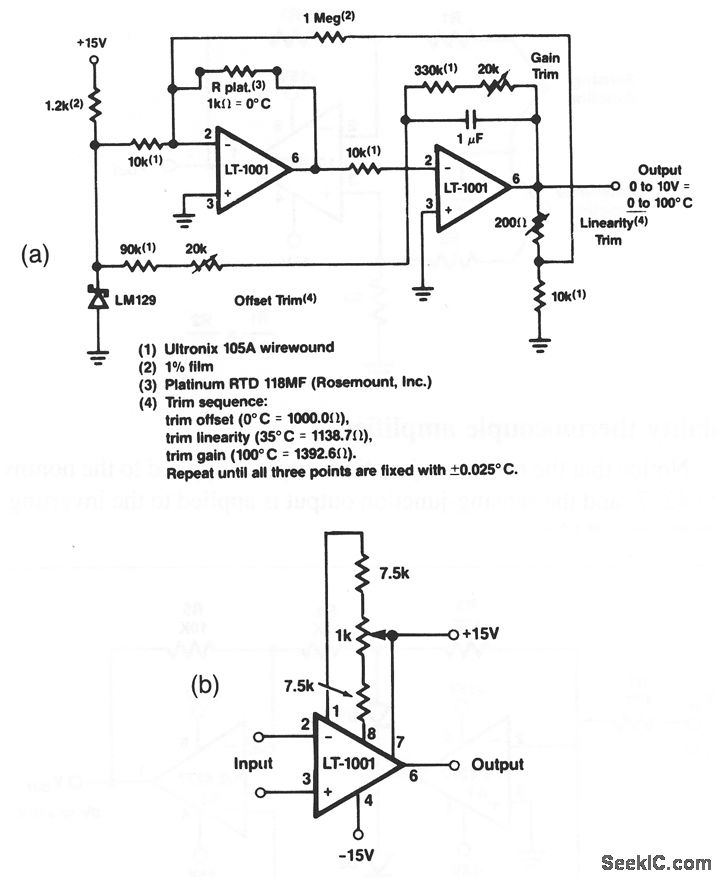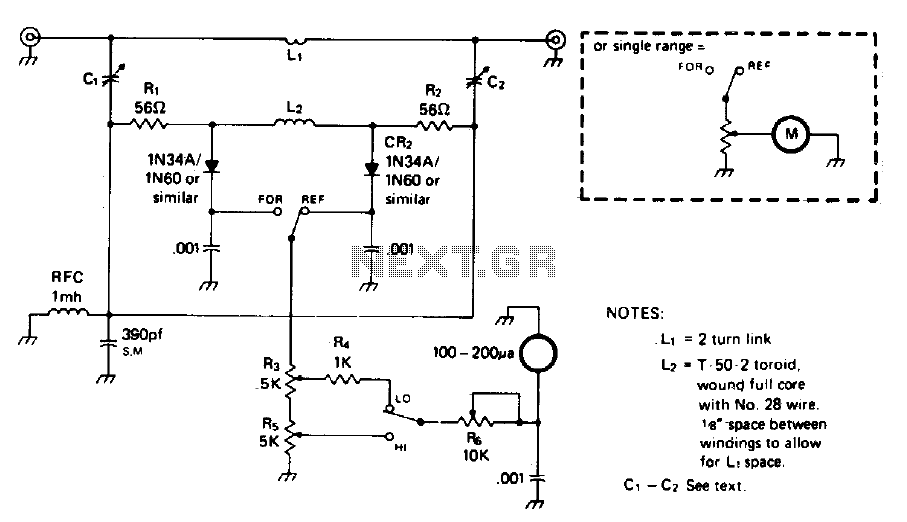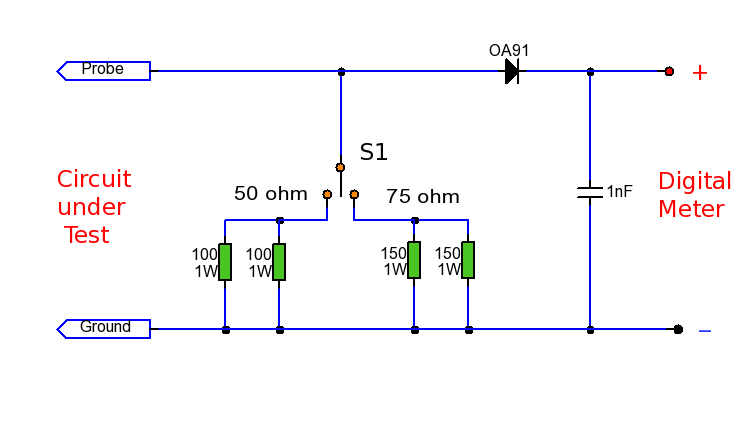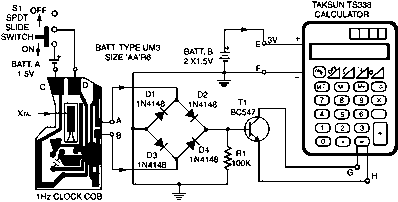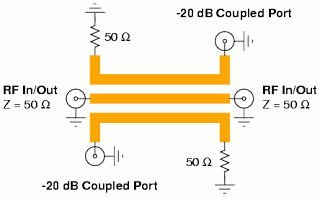
8 LED`s Audio VU Meter
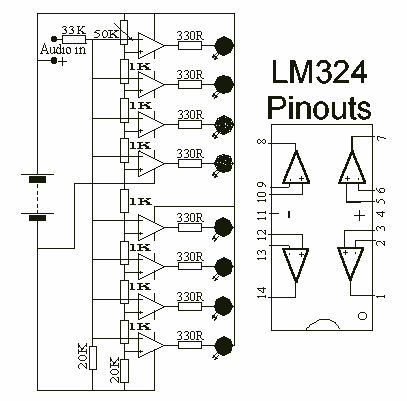
This circuit uses two quad op-amps to form an eight LED audio level meter. The op-amp used in this particular circuit is the LM324. It is a popular IC and should be available from many parts stores. The 1K resistors in the circuit are essential so that the LEDs turn on at different audio levels. There is no reason why you can't change these resistors, although anything above 5K may cause some of the LEDs to never switch on. More: This circuit is easily expandable with more op-amps, and is not limited to use with the LM324. Pretty much any op-amp will work as long as you look up the pinouts and make sure everything is properly connected. The 33K resistor on the schematic is to keep.
This circuit employs two quad operational amplifiers (op-amps) configured to create an eight-segment LED audio level meter. The LM324 IC, which contains four op-amps in a single package, is utilized for this purpose due to its availability and versatility. The circuit operates by detecting audio signal levels and illuminating corresponding LEDs based on the intensity of the input signal.
The design incorporates 1K resistors, which play a critical role in setting the threshold levels for each LED. These resistors ensure that each LED activates at specific audio levels, providing a visual representation of the audio signal's amplitude. It is important to note that while the resistor values can be modified, values exceeding 5K may result in certain LEDs not activating, which could limit the functionality of the meter.
The circuit's architecture allows for easy expansion. Additional op-amps can be integrated to increase the number of LED segments, thus providing a more granular level of audio signal representation. The flexibility of the circuit design permits the use of various op-amps, provided that the pin configurations are correctly referenced and connected.
In addition to the 1K resistors, a 33K resistor is included in the schematic. This component functions to stabilize the circuit and prevent unwanted oscillations, ensuring reliable performance. Careful attention to the layout and connections of the components is essential for optimal operation of the audio level meter. Overall, this circuit serves as an effective tool for visualizing audio levels in various applications, from simple audio projects to more complex sound systems.This circuit uses two quad op-amps to form an eight LED audio level meter. The op-amp used in this particular circuit is the LM324. It is a popular IC and should be available from many parts stores. The 1K resistors in the circuit are essential so that the LED`s turn on at different audio levels. There is no reason why you can`t change these resistors, although anything above 5K may cause some of the LED`s to never switch on. This circuit is easily expandable with more op-amps, and is not limited to use with the LM324. Pretty much any op-amp will work as long as you look up the pinouts and make sure everything is properly connected. The 33K resistor on the schematic is to keep 🔗 External reference
This circuit employs two quad operational amplifiers (op-amps) configured to create an eight-segment LED audio level meter. The LM324 IC, which contains four op-amps in a single package, is utilized for this purpose due to its availability and versatility. The circuit operates by detecting audio signal levels and illuminating corresponding LEDs based on the intensity of the input signal.
The design incorporates 1K resistors, which play a critical role in setting the threshold levels for each LED. These resistors ensure that each LED activates at specific audio levels, providing a visual representation of the audio signal's amplitude. It is important to note that while the resistor values can be modified, values exceeding 5K may result in certain LEDs not activating, which could limit the functionality of the meter.
The circuit's architecture allows for easy expansion. Additional op-amps can be integrated to increase the number of LED segments, thus providing a more granular level of audio signal representation. The flexibility of the circuit design permits the use of various op-amps, provided that the pin configurations are correctly referenced and connected.
In addition to the 1K resistors, a 33K resistor is included in the schematic. This component functions to stabilize the circuit and prevent unwanted oscillations, ensuring reliable performance. Careful attention to the layout and connections of the components is essential for optimal operation of the audio level meter. Overall, this circuit serves as an effective tool for visualizing audio levels in various applications, from simple audio projects to more complex sound systems.This circuit uses two quad op-amps to form an eight LED audio level meter. The op-amp used in this particular circuit is the LM324. It is a popular IC and should be available from many parts stores. The 1K resistors in the circuit are essential so that the LED`s turn on at different audio levels. There is no reason why you can`t change these resistors, although anything above 5K may cause some of the LED`s to never switch on. This circuit is easily expandable with more op-amps, and is not limited to use with the LM324. Pretty much any op-amp will work as long as you look up the pinouts and make sure everything is properly connected. The 33K resistor on the schematic is to keep 🔗 External reference
